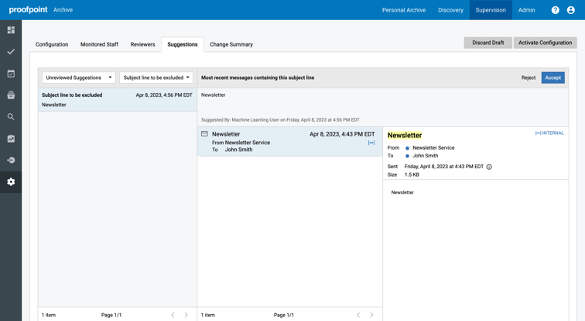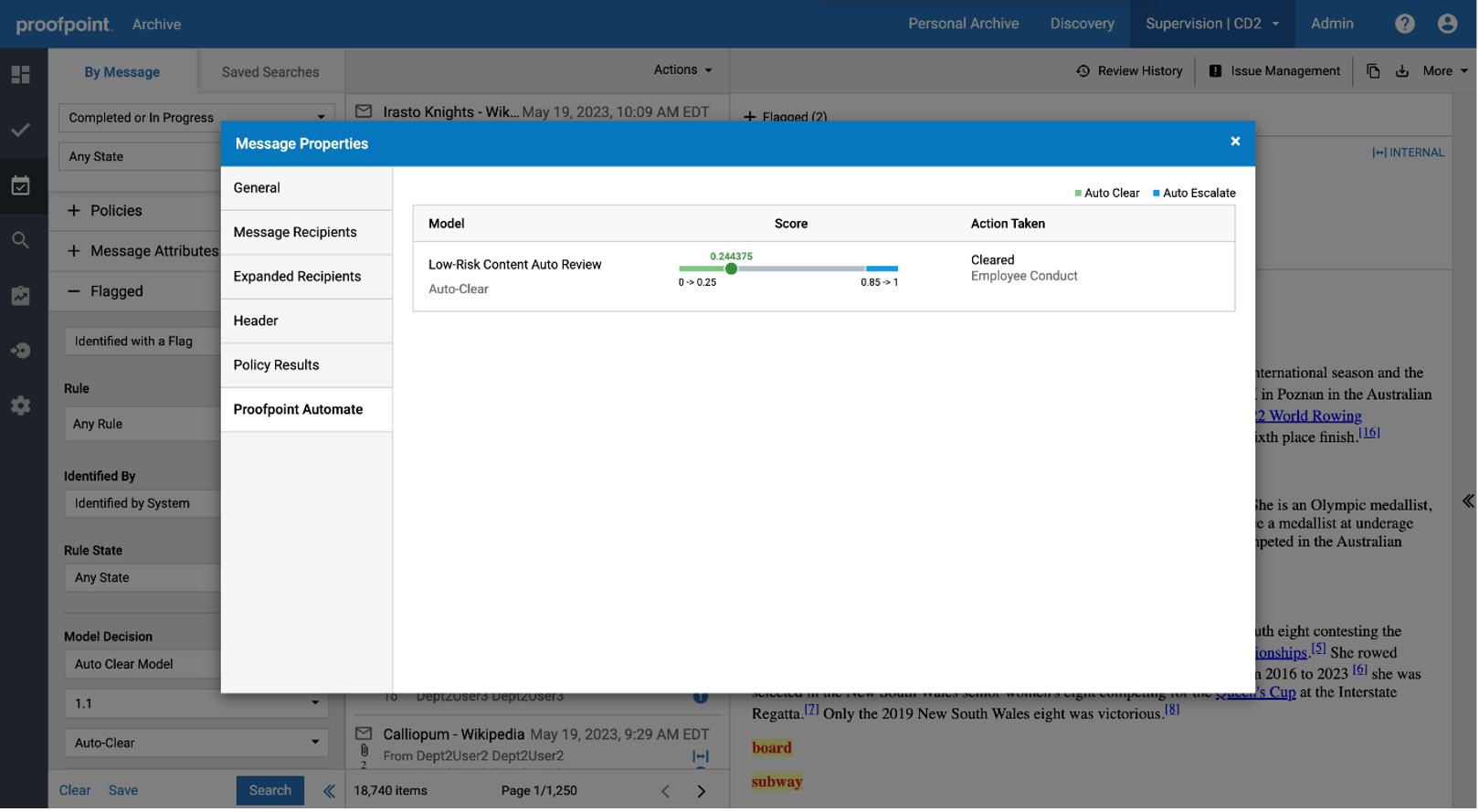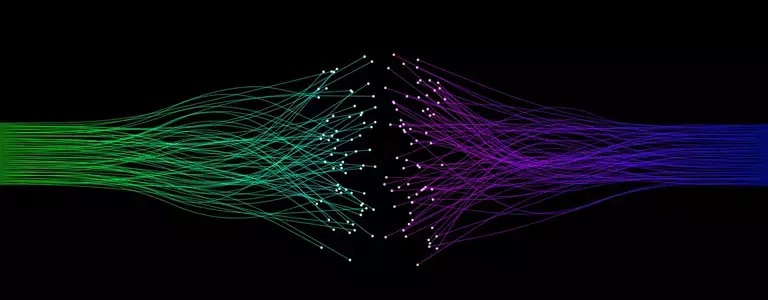Did you know that, based on IDC’s research, 39% of businesses say that improving operational efficiency is the top primary business objective for using artificial intelligence (AI)?
At Proofpoint, there is tremendous interest in augmenting our product portfolio with AI and machine learning (ML) to produce benefits for our customers. In fact, today many of our Intelligent Compliance customers use our AI/ML technology to improve their operational efficiency and mitigate their compliance risk. When they report back to us about their quantitative and qualitative benefits, their results are impressive.
In this blog, we’ll give you an overview of why highly regulated firms choose the Proofpoint Intelligent Compliance platform. And then we’ll go into details about how ML works in several solutions in the Intelligent Compliance product family.
Proofpoint Intelligent Compliance is a comprehensive solution
Our Intelligent Compliance platform offers a way for businesses to stay protected and compliant in a dynamic, virtual environment. It provides them with:
- AI-driven data visibility
- Information control
- Records retention and oversight
- Robust e-discovery capabilities (built-in and advanced) to satisfy requirements set by corporate mandates and regulatory bodies
The platform includes these solutions:
- Proofpoint Archive
- Proofpoint Automate
- Proofpoint Capture
- Proofpoint Discover
- Proofpoint Patrol
- Proofpoint Supervision
- Proofpoint Track
A must-have for highly regulated firms
The Proofpoint Intelligent Compliance platform can benefit businesses in highly regulated industries. For example, financial services firms that are doing business in the U.S. must follow rules about supervision and monitoring set out by the Financial Industry Regulatory Authority (FINRA) and the Securities and Exchange Commission (SEC).
Many of these firms now use Proofpoint Supervision technology to enable regulatory compliance with FINRA and the SEC. And Proofpoint Automate and Proofpoint Supervision work together to help these businesses supervise their digital communications.
Reducing false positives with ML models
Automate makes a big impact with helping businesses to reduce false positives. These are flagged, archived items, like email messages, which turn out to be of low or no risk after a review. They are a significant problem for companies that need to supervise digital communications.
Automate uses ML models with Supervision to reduce false positives from supervisory review queues. This helps customers streamline processes and reduce human fatigue and errors. Teams manage and review much less low-risk content, which means reviewers can focus on real issues.
One Proofpoint client reported that after deploying Supervision and Automate, they cut their review queue volume by a third. They reduced their flagged but not reviewed items from nearly 30 days to about 14 days out, which is now within their internal service-level agreements.
Automate provides ML models and the tools to build ML models trained on your data to help reduce false positives. You have the option to:
- Build your own models
- Work with Proofpoint professional services to develop customized models
- Start with any of the models included with Automate
The models that come with Automate are Low-Risk Content Model (LRCM), Disclaimer Detection Model or Customer Complaints Model. Let’s take a closer look at the first one—LRCM.
What does the LRCM do?
You can use LRCM to remove low-risk content in two different ways—through exclusion detection or Auto-Clear.
For sender and subject line exclusion detection, the model will make suggestions that an administrator can review, accept or decline. (See Figure 1.)

Figure 1. Proofpoint Automate uses exclusion detection to surface subject line suggestions to add to the Supervision policy.
If the administrator accepts the subject line, that line is added to the Supervision policy. Subsequent messages with the respective subject line will not be evaluated by policy.
If the administrator declines the subject line, no policy changes are executed. Messages with that subject line will continue to be subject to flagging and review. The process is the same for sender exclusion detection.
For Auto-Clear, if the model determines that evaluated content is low-risk, subject to the threshold configured by the administrator, the content is automatically processed eliminating the need for human review.
See Figure 2 for how to view model decisions. (Note: The administrator may tune how aggressive or conservative the LRCM is by adjusting the thresholds.)

Figure 2. Here, you review the model score in Automate and the action taken for a message.
When was the LRCM released?
LRCM was announced and released in 2021 with Proofpoint NexusAI for Compliance. In 2022, Proofpoint rebranded our compliance portfolio. As part of that effort, we changed the name of NexusAI for Compliance to Proofpoint Automate.
What data was the model trained on?
To train LRCM, we used data submitted by partner clients from the financial services industry. When you configure an Automate ML model, you assign which Supervision rules apply to it. But LRCM is rule-agnostic, and you can use it with any Proofpoint Supervision rule.
Learn more about Proofpoint Automate
If you would like to find out more about our Automate solution, see our Automate tech brief. Or you can consult the user guide in the Proofpoint community.
You can also view a high-level Automate overview video. This video can be a useful tool to communicate the value of Automate to your colleagues.
Schedule a demo or contact your Proofpoint compliance sales specialist to discuss how Proofpoint Automate can work for you.
Subscribe to the Proofpoint Blog

